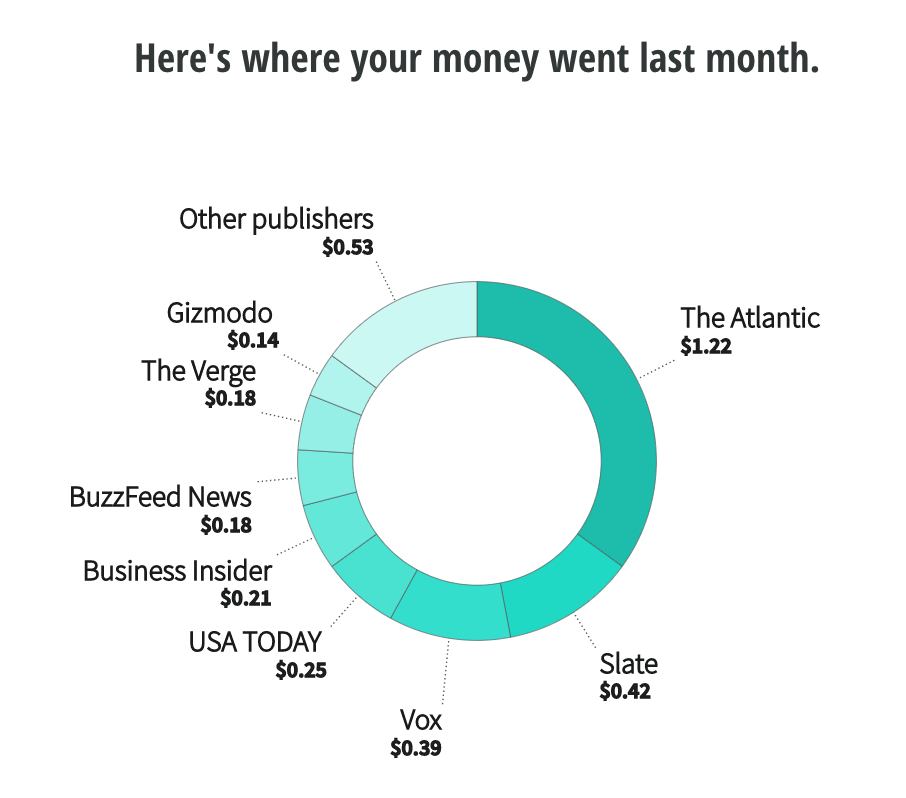After more than three years of gestation, including more than one in beta, Tony Haile’s Scroll introduces its open-to-the-public version of the site today.
Former Chartbeat CEO Haile is anything but modest in his claims for Scroll. It’s meant to be a reading experience “like the internet would be if we went back and invented it from scratch.”
Haile walked me through a demo over the weekend, and Scroll delivers on two of the promises he has been making. It converts ad-heavy articles from participating publications into ad-free displays and does so in an instant.
I also got a better sense of why this is a passion project for Haile, a charming Brit, whose varied pre-Chartbeat experience included studying and writing about the Middle East and exploring the North Pole.
Chartbeat has become an indispensable real-time analytics tool in many newsrooms. It realized an ambition Haile told me about years ago — supplementing clicks and pageviews with more meaningful measures of engagement. But the advertising community never fully embraced the concept.
As we wrapped up our conversation, Haile said, “I built a successful business. I led polar expeditions. But I never could move the ad industry. That’s beyond my skills … We couldn’t get media planners to add another column to their Excel spreadsheets.”
Hence a product aimed at escaping clutter, cookies, slow load times and the like when consuming digital content. Haile said that he thinks there are “a few hundred million people out there looking for a better experience.”
Scroll offers some other bells and whistles: easy storage and display of what you have read, the chance to resume any piece where you left off if you have been interrupted and the option of switching over to a (machine-generated) voice version of the text if you are, say, fixing dinner.
For the launch, Haile said, the first month will be free, then six months for $2.49 founding members with a jump to a full rate of $4.99 a month after that. (Further details on Scroll.com)
That provides access to a long list of 300 sites — including The Atlantic, Slate and USA Today — but not a comprehensive one. Absent are top paid sites like The Washington Post, The Wall Street Journal and The New Yorker.
The New York Times is an investor but not yet a participant. They “are doing so well, they can wait and see how it goes,” Haile said. “They don’t need to change their (digital) business model.”
The roster is almost all national, but Haile said that he is close to adding several leading metro publishers.
What’s in it for publishers? A share of each user’s monthly membership dues goes to them, based on time engaged at a given outlet (users also get a monthly report of how their money is distributed). For Haile himself, a pie chart showed he had spent the most time with Slate, next The Atlantic.

Wait — does that make up for the ad revenue that goes away in the Scroll display? Haile says yes, and by a wide margin. The yield for one reader’s viewing is not just higher, but a multiple higher, he claims.
Haile declined to talk about audience number goals. It clearly will take a long time and a lot of scale to make those royalties amount to much. Conversely, there stands to be a small gain in the meanwhile, plus some exposure to new readers who may be potential subscribers. And Scroll’s system leaves pay meters intact — it is not an end around the paywall.
Still I (and I am sure others) wonder how willing readers will be to shell out $60 a year for a better reading experience. No doubt ad cacophony is an irritant — but that irritating? And how will potential users, many of them “casual” news consumers and not newshounds, by Haile’s description, find out about it?
I do see Scroll as a hybrid — cousin to other multi-publication subscription bundles, past and current, many of them flops. It is not exactly a micropayment system, except in the manner the publisher gets paid.
Nor is the selection of articles curated to your reading preferences as demonstrated by tracking your online activity. You pick them, maybe with the prompt of a weekly “best of” newsletter. So Scroll doesn’t have the guided serendipity that I value, for instance, in Mozilla’s Pocket platform.
While Haile and collaborators have been slowly working through the considerable tech challenge of instantly removing ads in a post, other such services like Apple News have entered the space.
Haile’s reputation in the industry partly traces to his figuring out a seven-year path for Chartbeat from a standing start in 2009. I would bet on second and third phases already in the planning phase for Scroll.
But it boils down to a simple proposition. Is the smooth read “a job to be done” for consumers and publishers (in the words of disruptive innovation theorist Clayton Christensen, who died last week)? Haile did the tough trick of inventing an essential with Chartbeat — so perhaps a second act is in the cards.
Rick Edmonds is Poynter’s media business analyst. He can be reached at redmonds@poynter.org.






